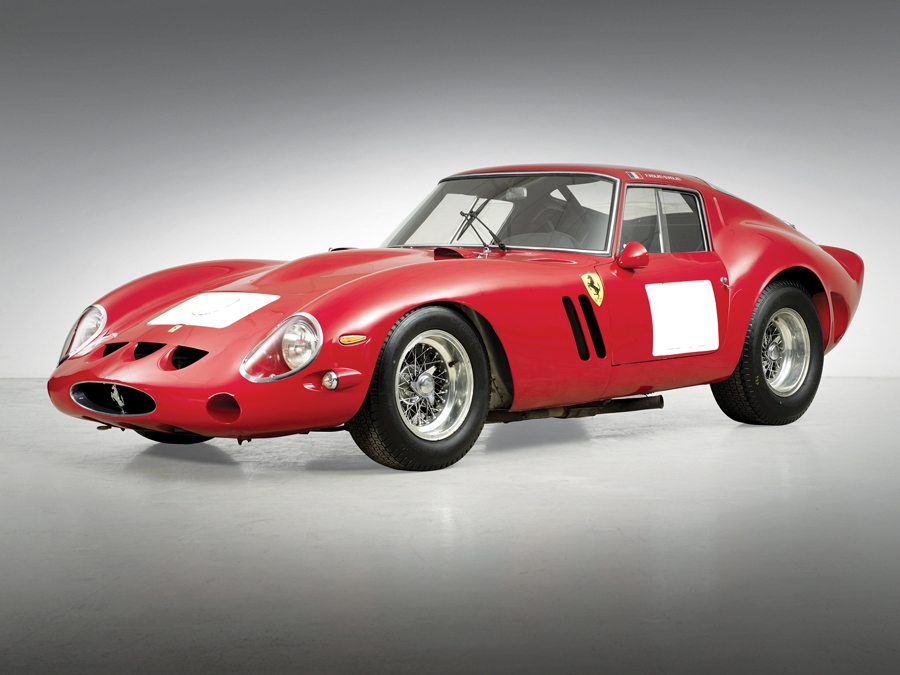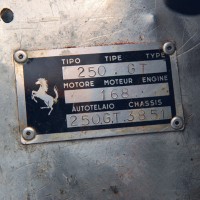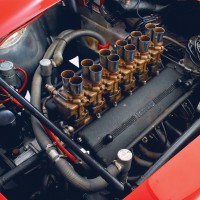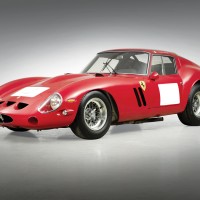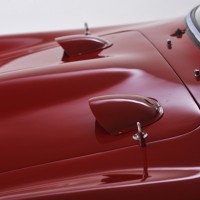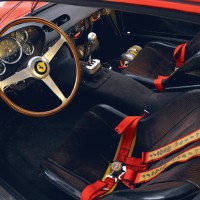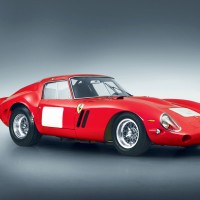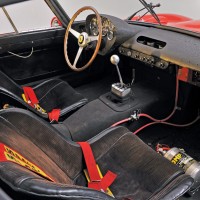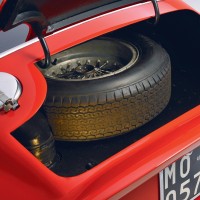SCM Analysis
Detailing
| Vehicle: | 1962 Ferrari 250 GTO coupe |
| Number Produced: | 39 |
| Original List Price: | $18,000 |
| Tune Up Cost: | $3,000 |
| Distributor Caps: | $500 each |
| Chassis Number Location: | Left frame member by steering box |
| Engine Number Location: | Right rear above motor mount |
| Club Info: | Ferrari Club of America, Ferrari Owners Club |
| Website: | http://www.ferrariclubofamerica.com |
| Investment Grade: | A |
This car, Lot 3, was sold for $38,115,000, including buyer’s premium, at Bonhams’ Quail Lodge Auction on August 14, 2014.
Unless you live under a rock, you already know that this was the highest-priced public sale of an automobile ever. That doesn’t necessarily make a GTO the most valuable car in the world, but there is no more valuable series-production automobile. Ferrari built 39 250 GTOs and all of them still exist today. That’s a big production number for a $10,000,000 automobile — for a $30,000,000 car it’s almost incomprehensible.
The start of a legend
The 1960s was the golden age of GT racing. A competitor could drive his car to the track, race it and drive it home. Ferrari had been particularly successful in that arena. They had a particularly good run with their 250 GT Short Wheelbase, but stiff competition was coming from Aston Martin’s new DB4GT Zagato and Jaguar’s new E-type lightweight. A new car was needed.
The process of getting a car approved for a particular series is called homologation. It involves the submission of a proposal to the sanctioning body on a car to be entered in the series. If the proposal is accepted, the car is homologated — in Italian, omologated. In GT racing during the 1960s, one of the requirements was the production of 100 examples. To make a 39-production car qualify as a 100-car production took a little legal maneuvering, but Ferrari got it done.
Homologation proposals contain extensions which are possible modifications the manufacturers may want to make as the model evolves. This is where the manufacturer hides anything that may give them an unfair advantage. The GTO evolved from the 250 Short Wheelbase’s homologation papers. Ferrari carefully exploited the SWB’s extensions, so the 250 GT became the 250 GT Competition. Ferrari lore goes that a cable about the new 250 GT–O (for omologated) arrived at Maranello without the hyphen. The 250 GT Competition became the 250 GTO, and today the GTO moniker is perhaps the most revered of all car names.
A winner everywhere
The competition history of the GTO is glorious. The car won races at the best tracks — and small venues — on almost every continent around the world. The list of GTO drivers goes from World Champions to fledgling amateurs. Admirable results continued for years, and even today GTOs can be found fighting on the vintage circuit.
It is the competition success that is the basis for the Ferrari GTO’s stratospheric value. In period, it was so desirable that there was a feeding frenzy for the wreckage following the fatal crash of one GTO. While there was a short lull in the demand for GTOs during the 1970s, the introduction of vintage racing made it the hottest ticket on the planet.
GTOs appeal to people who love cars. Several owners have owned more than one. People who own these cars race them, collect them and genuinely enjoy using them.
It may be that GTOs are not expected to be kept in pristine condition — or it may be that nearly all of them have suffered previous damage — but despite their incredible value, they are often seen at shows, rallies and vintage races. Even while Bonhams was establishing their world-record sale, a GTO was going full bore around Laguna Seca with a 250 LM and a competition Lusso on its tail.
This GTO was only the third car to be auctioned at Bonhams on a weekend in which six major auctions would be offering a half billion dollars in inventory. Within the industry tensions were high, as a poor result might trigger a disastrous weekend, but casual observers were expecting a billionaires’ Battle Royale.
Some expected a higher price
Bonhams’ tent was packed for the auction. It was standing-room only, and everybody was there. Packed barely arms-length from me were several high-end dealers, Jay Leno, and a GTO owner taking in the event with his lovely wife. The auction was off to a shaky start when the auctioneer accepted a $10,000,000 opening offer. Fortunately $30,000,000 came pretty quick, but from there things got ugly.
Bidding slowed to $100,000 increments, then got down to a floor bidder and a phone bidder throwing slow-motion jabs of $50,000 each.
The phone bidder finally prevailed at $34,650,000 plus buyer’s commission, and the room was stunned. Many had anticipated a $50,000,000, $60,000,000 or even $70,000,000 result. Even the insiders who knew better felt let down.
A very, very small club
There are only 39 250 GTO driver’s seats, and it takes more than money to sit behind the wheel. GTO owners love their cars, they don’t need the money, and their cars’ value goes up faster than their other investments. Owners get offers with the frequency of New York bus arrivals. There will be another one soon, and it will be for more than the last one. You have to be at the right place at the right time to buy one, and that doesn’t come often.
A great sale, a great buy
Whoever the seller is, they/he/she should be happy. If there can be such a thing, GTO 3851 was just an average GTO. It had no high-profile results or celebrity drivers. It was seriously wrecked twice — once with fatal results. It was rebodied at the factory. The years at the hands of Fabrizio Violati and the years in the museum gave it exposure — but added little to its value.
Bonhams didn’t publish a pre-sale estimate, but when pushed confided it was $30,000,000 to $40,000,000. The consignors knew what they were doing — and so did Bonhams.
The pros whom I talked with thought this was about the right price. The buyer is reported to be an Englishman who intends to use the car — just like most other GTO owners. He may have paid a record price, but that’s old news already. GTOs always sell at record levels; the next one will be more.
The buyer paid a realistic price and got the E-Ticket Ride. That’s better than having money and no GTO. ♦
(Introductory descriptions courtesy of Bonhams.)
